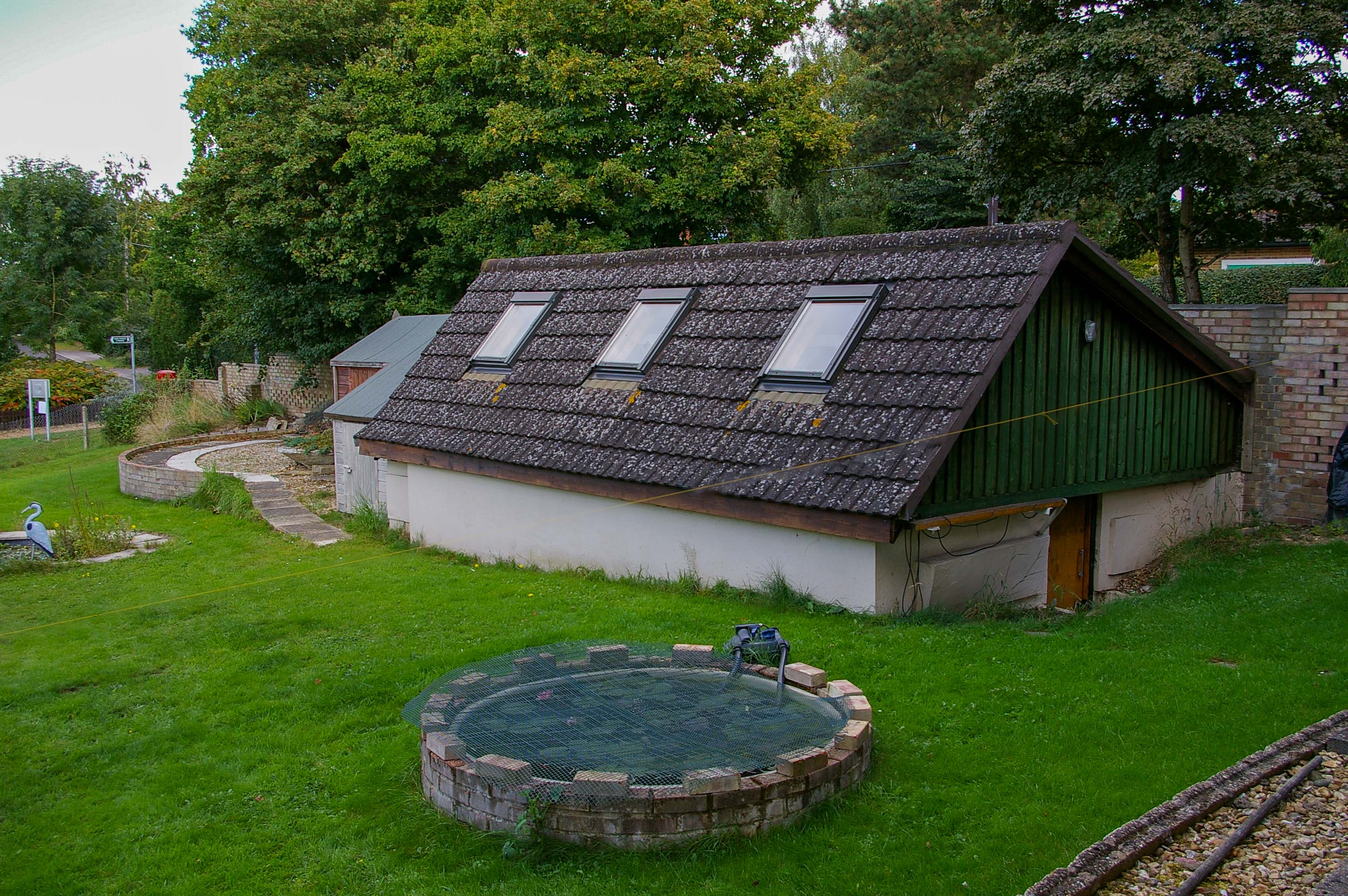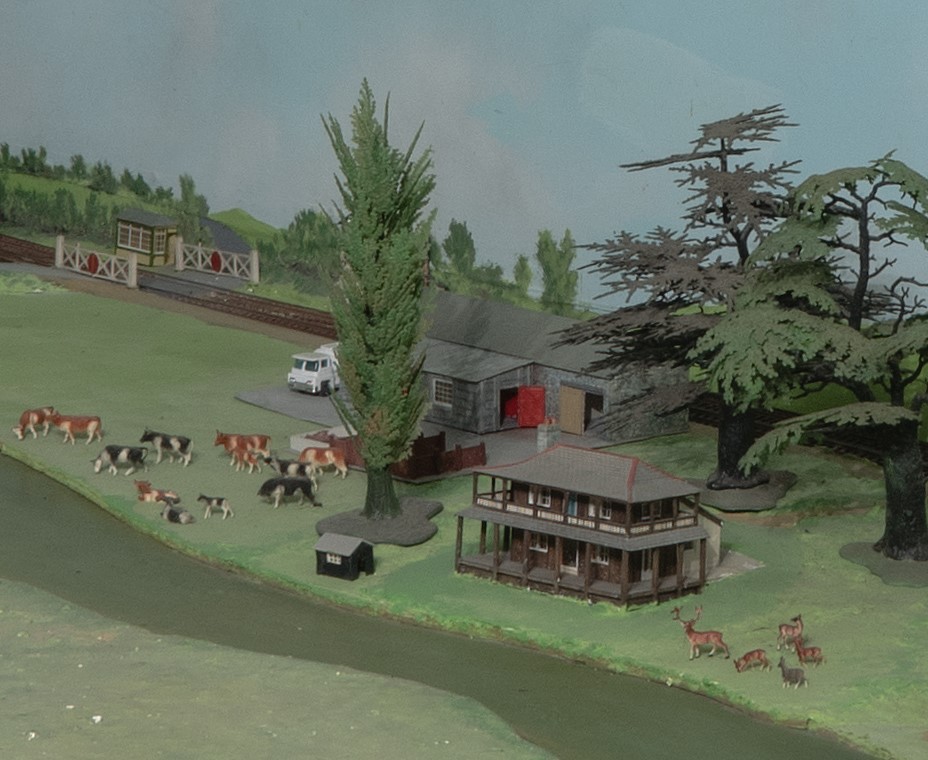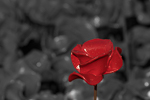TT Scale Layouts
TT was my father's favorite scale. Table Top railway modelling. He was also a member of the 3mm Society.
Apparently there is a British TT and a Continental TT, and of course, they are different scales.
3mm is short of a scale of 3mm to 1ft. There are some calculations that can go with that. A foot is 304.8mm, generally approximated to 305mm. The scale factor is therefore 101.6. This is very close to the frequently used architectural scale of 1:100. There are some convenience's in this coincident.
Standard Gauge railway, the distance between the rail heads, is 4' 81/2". The metric equivalent of that is 1435mm, or strictly 1435.1mm. The 3mm to 1ft scale size of Standard Gauge is 14.124mm. This is also known as 14.2 Fine scale. Whereas the normal TT gauge is 12mm. Tri-ang and later Peco produced 12mm gauge track for TT.
Apart from the similarity to the architectural scale, my father's main reason for preferring TT scale was that the trains were big enough to be reasonably realistic and the scale was small enough to allow the construction of reasonable sized landscapes in which the TT Layout can be built. N gauge is too small and toy like, and OO/HO requires too much room for a realistic landscape. Having said that he did build both N Gauge and OO/HO Gauge layouts in addition to the main TT layout.
Layouts
Some people build railway layouts that a transportable. Sometimes, in many sections that can be stripped down and re-constructed in a different location, such as a Model Railway Club, perhaps R&DRMS. or a show similar to the Romsey Model Railway Show. Here is an article of mine about the Romsey Model Railway Show together with some video clips. Some other people build layouts that take over their garden. My Dad, however, chose the static indoor layout. a permanent display, available by invitation only. Whilst some people model real places, either rigidly or loosely, others, including my Dad adopted the fictional approach. Although some of the areas were of real places, the adjacent area could be either somewhere miles away, or entirely fictitious.

Throughout my life I have not known a period of time when my Dad did not have a TT layout. In one house, in the attic. Then we moved to Romsey. Another layout, start again. In a room with a lift up baseboard flap with copper connections to automatically re-connect the track circuits upon closure. Or perhaps, more importantly, disconnect the power to the trains when the flap is up.
Then, a dedicated railway shed in the back garden. I helped build the shed whilst I was a teenager and still lived at home. To avoid the flap scenario, or crawling under the table. there is a dive down to a full height door, with steps up inside the baseboard, or railway table. The front and side edges were cantilever, purely for the design assessitic of have curved walls. The metalwork for the cantilever was mainly from old cast iron bed frames, with the verticals sunk deep below the floor, and the horizontals supporting the railway table. As it was a cantilever structure it had a lightweight superstructure. The building was even connected to the house central heating.
The lightweight superstructure lasted well for many years. but eventually started to fail. It was replaced, initially with a scandinavian type A frame roof. However, some of the neighbours thought that was too high. The front wall was extended to remove the cantilever element as the new roof would be too heavy for that design and a lower asymmetrical roof replaced the A frame.
That was not the last change.
A new, larger model room was built adjacent to the house together with a granny annex. My parents took in my ailing Nan and she survived a lot longer than the predictions at the start. A success.
The TT model railway was lifted, in parts from the Railway Shed and rebuilt, with differences, in it's new home the Railway Room. Again the doorway was lower than the table top. The Railway shed had an extension and was used for the OO Layout.
Now changing the order to reverse chronological.
TT layout in the railway layout in photos in 2005.
There are limits to the size of photos I can post in this article so I have embedded a SmugMug Slideshow instead. I hope it works for you.
Early days of the transfer from the Railway Shed to the New Railway Room. There is evidently a lot more work to do, especially at the town end. One of my contributions to the previous layout was a couple of scratch built 3 way points in the goods yard. On the new layout the goods yard, sidings, and loco sheds are being remolded, so they were no longer required.
The layout was primarily BR Southern steam, with occasional GWR and LMS. Langstone Harbour and a mountain village at one end and a large town at the other. Another of the differences my Dad adopted in his layouts was continuous running capability. Mainly full circuits. Not back and forth, with careful movements, and points operations. Sometimes people operate a timetable on their model railway. Six independent circuits with one train on each all running at the same time. Different levels and not always in view. The circuit for the suburban stock mainly ran under the table, only appearing at the station, climbing out of a tunnel. In addition to the layout in the photos a further high level peninsular was being considered. He was building a model of Portsmouth station, to used as a part Terminus and part Through station. His train consists were generally long, as could be expected on a mainline. Trains travelled at scale speed.
For the avoidance of doubt, neither he at the time, nor I, are suggesting that one method of Railway Modelling is better than any other. It is just a statement of how he developed his layouts. In fact the greatest joy for him was in the building of models. Proprietary, card and plastic, kit models as well as scratch built. Sometimes he would use an OO proprietary kit and re-scale it. The scratch models could start from anything, such as the catering cans of baked beans, which were to become part of the oil depot. I used a small ball as the basis of a spherical container for use in an industrial complex, perhaps a chemical works. Sprayed gray and fitted out with ladders walkways, and edge fencing as well as a girder support structure. Unfortunately, over the years, the ball deflated. It was replaced with a plastic cistern float value ball. That was not as large, but would not deflate.
I made electricity pylons out of small strips of angle iron, bought as plastic extrusions from the local model shop. eg Plastruct Fineline Angle.
He would start with thin plywood for the larger models. He was sometimes ask to build architectural models, on a paid basis. Windows and door openings cut out on the flat sides. Detachable roofs constructed. Cladding or brick-paper applied. Then the finishings. Days and months on a single model. Then it could go on the layout. For the photo-shoots, many of the models were placed in approximate position, incomplete.
 The Patey's New Forest Lodge with deer in the garden, scratch built. An old hunting lodge, deep in the forest, but relocated beside the river.
The Patey's New Forest Lodge with deer in the garden, scratch built. An old hunting lodge, deep in the forest, but relocated beside the river.
Sadly my Dad became ill, and died in 2010. The layout did not progress much beyond the photos above, taken in 2005. The layout was maintained operational until after my Mum died and the house was sold, and the layout decommissioned.














